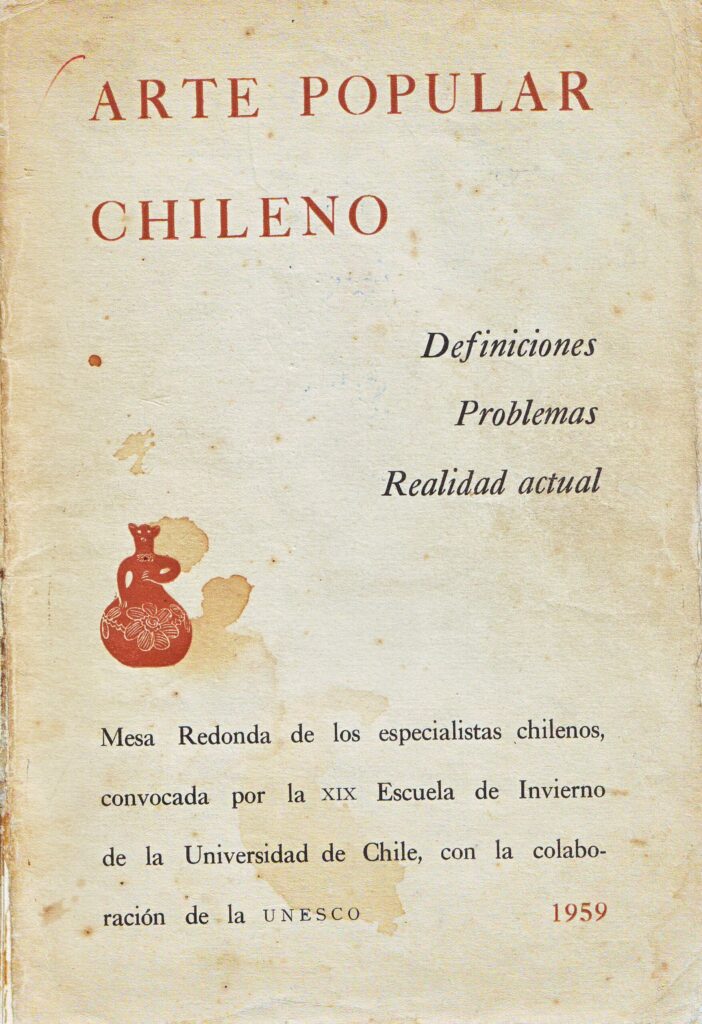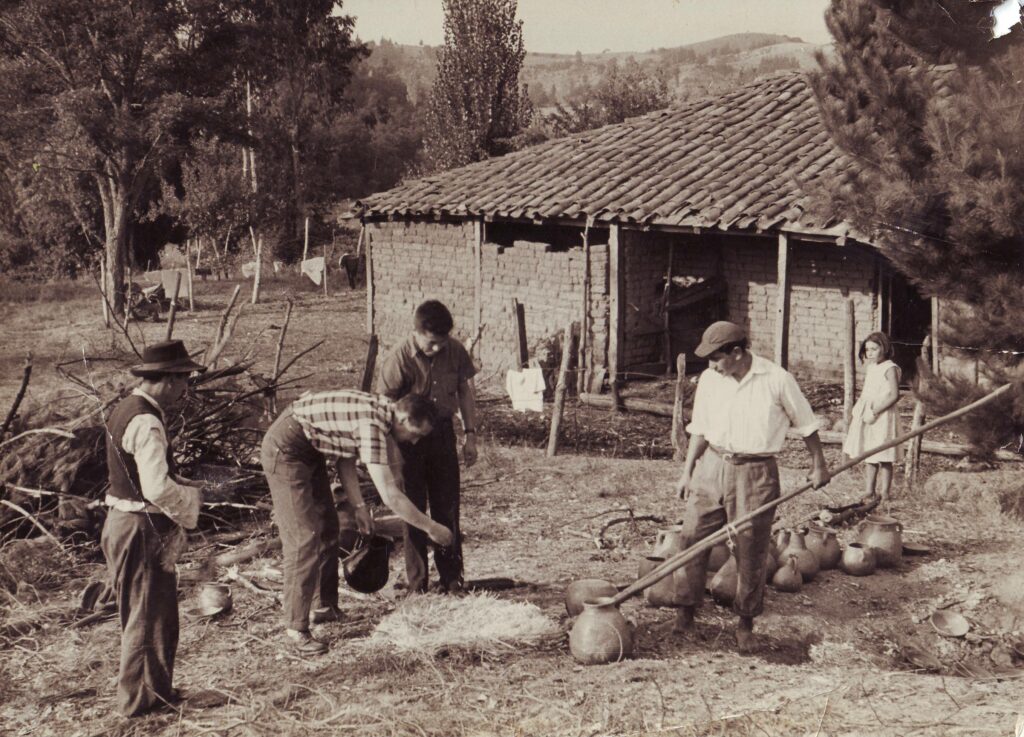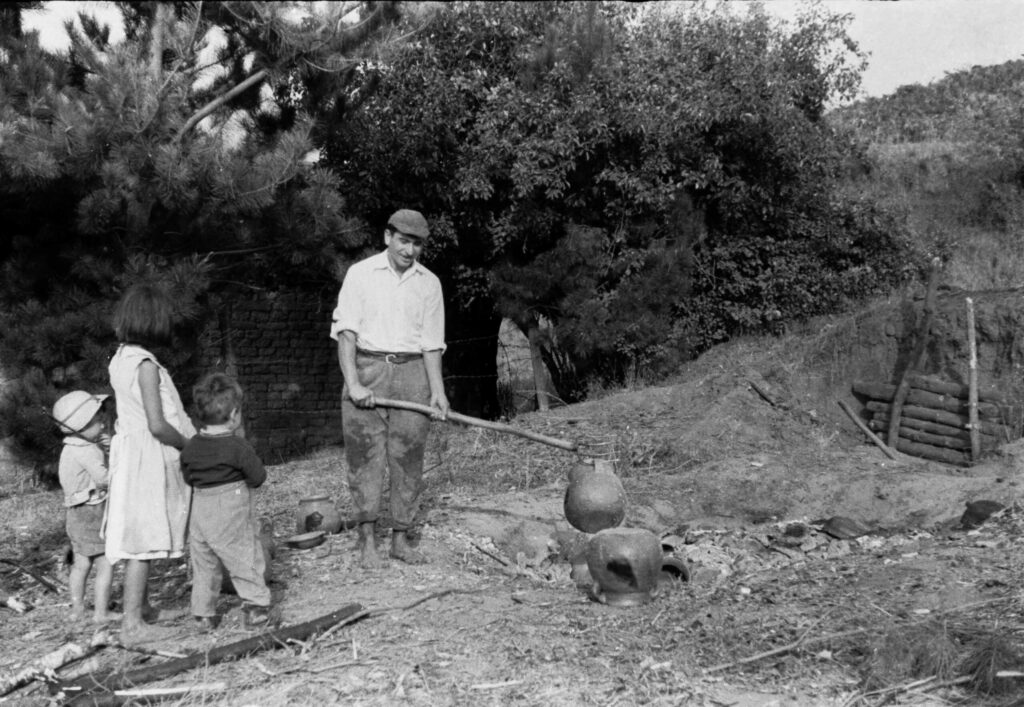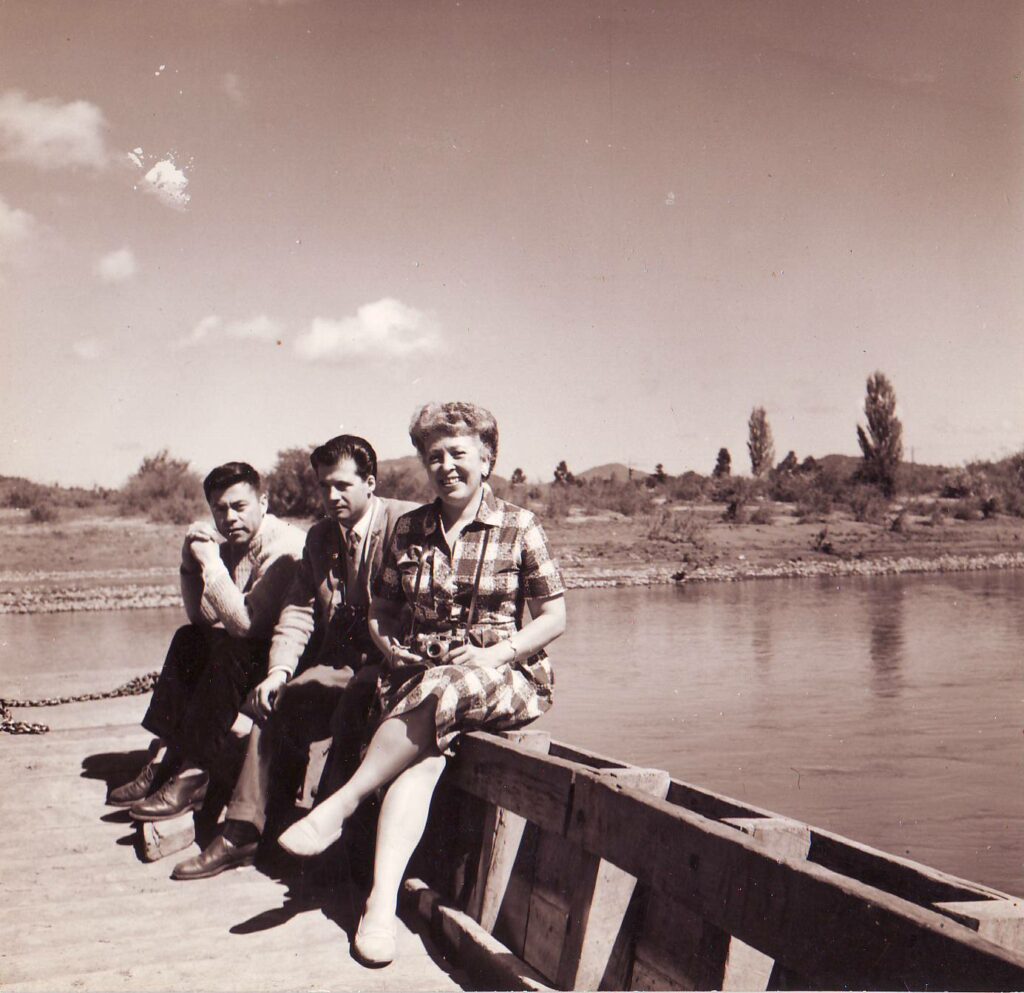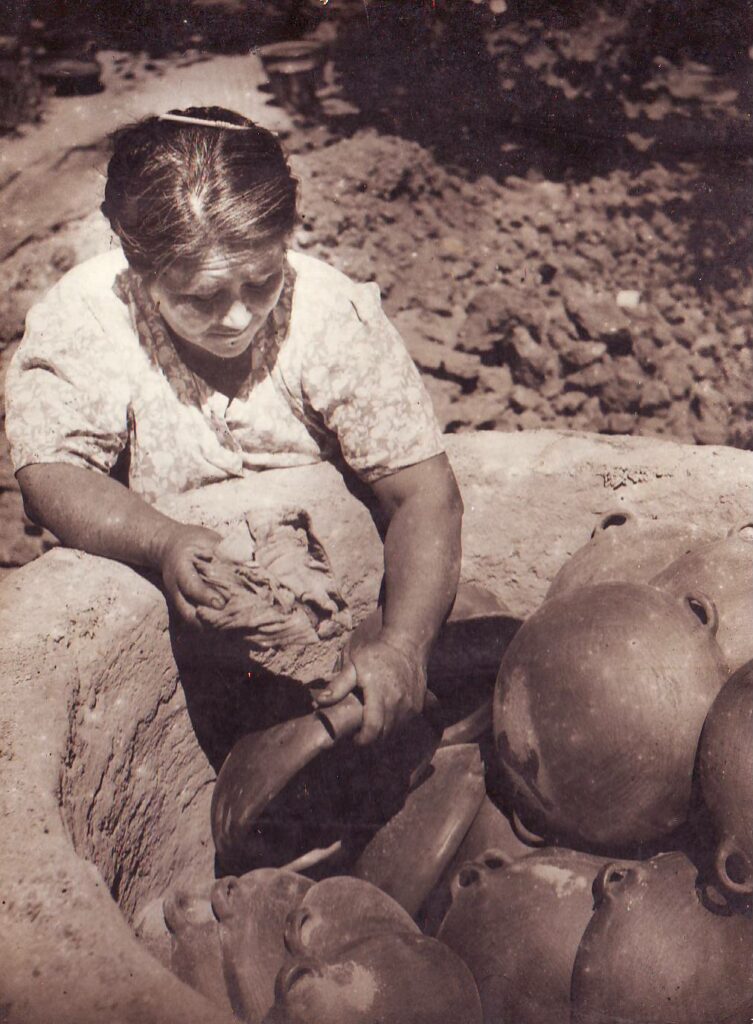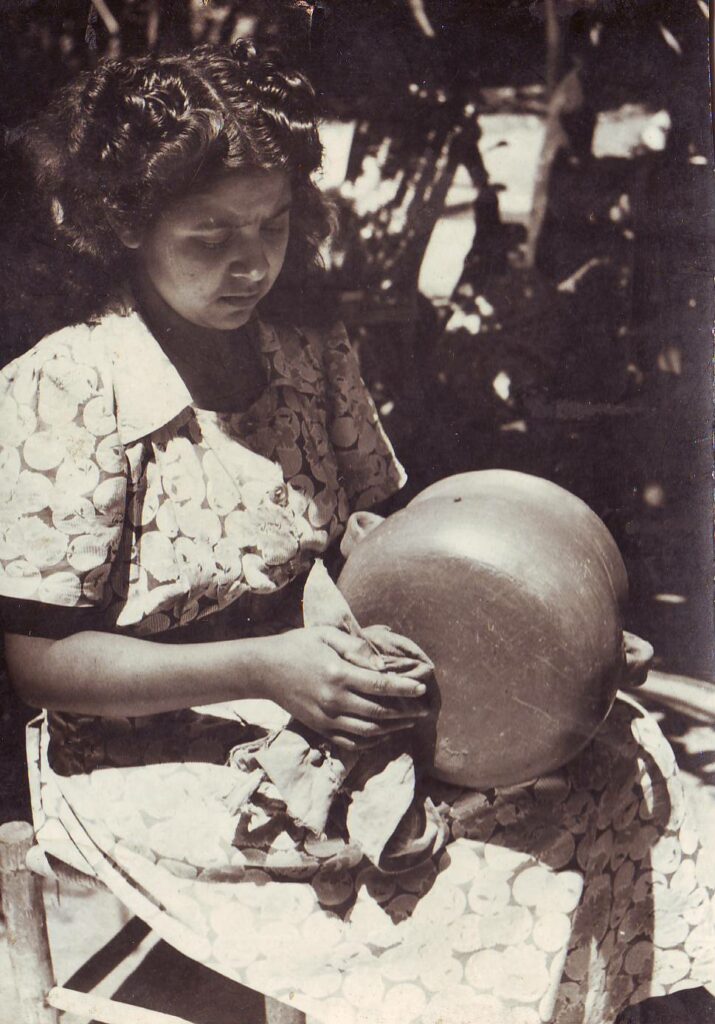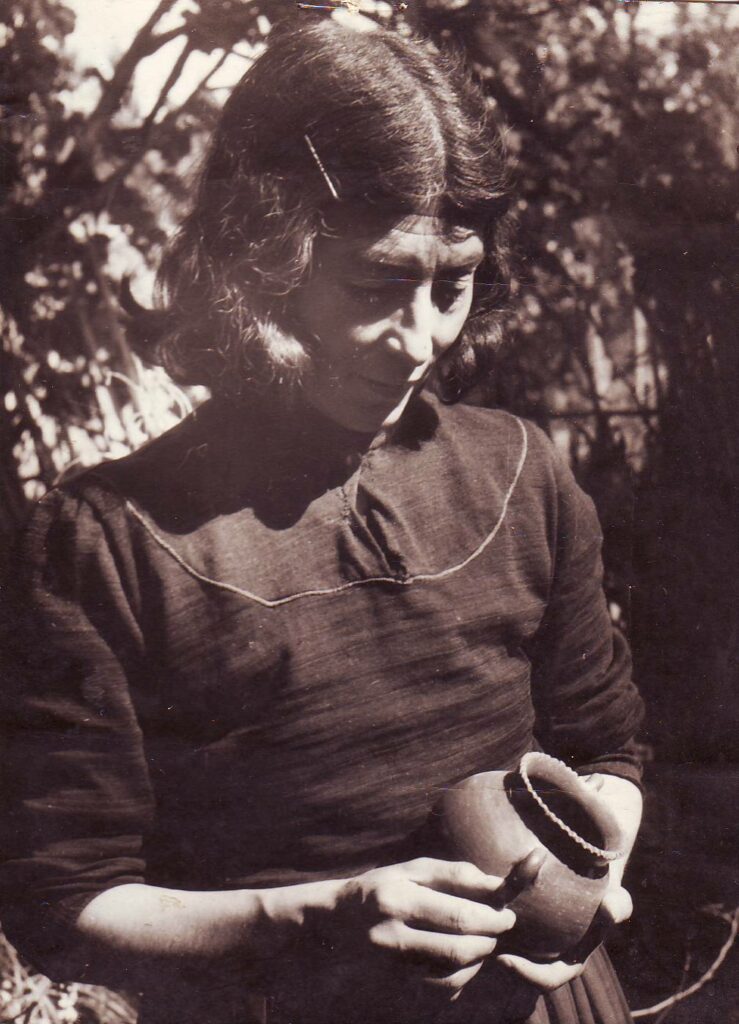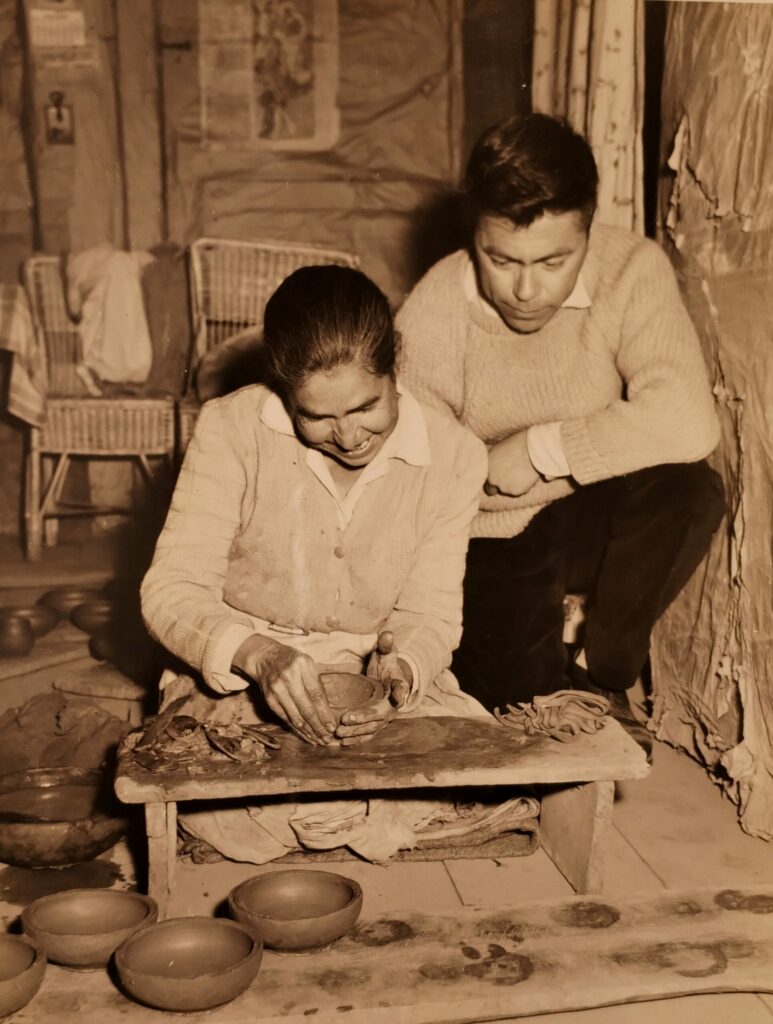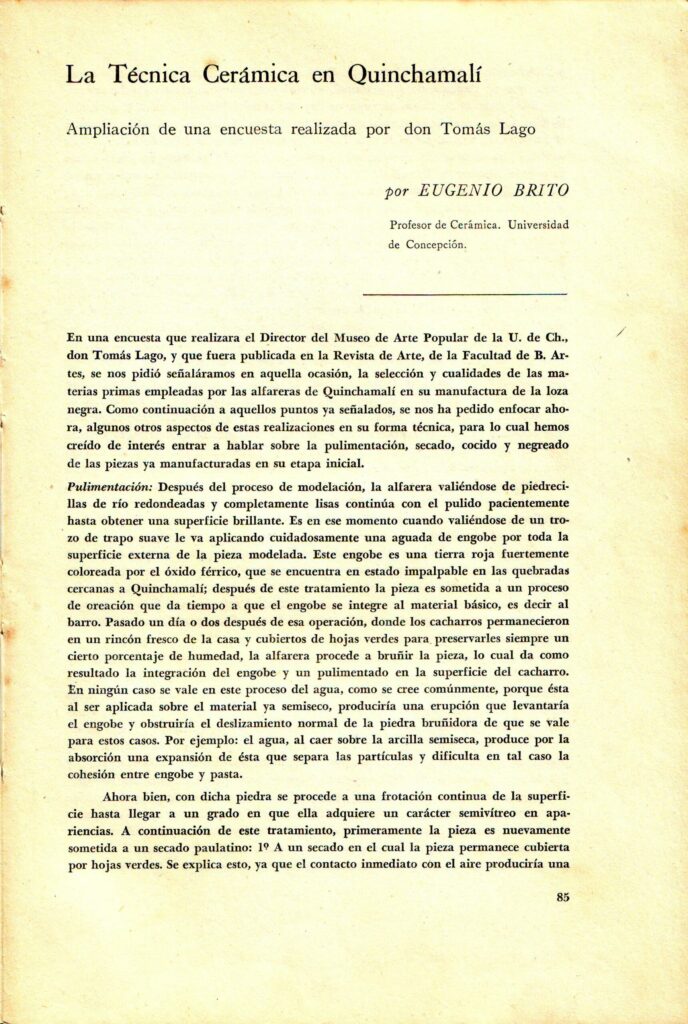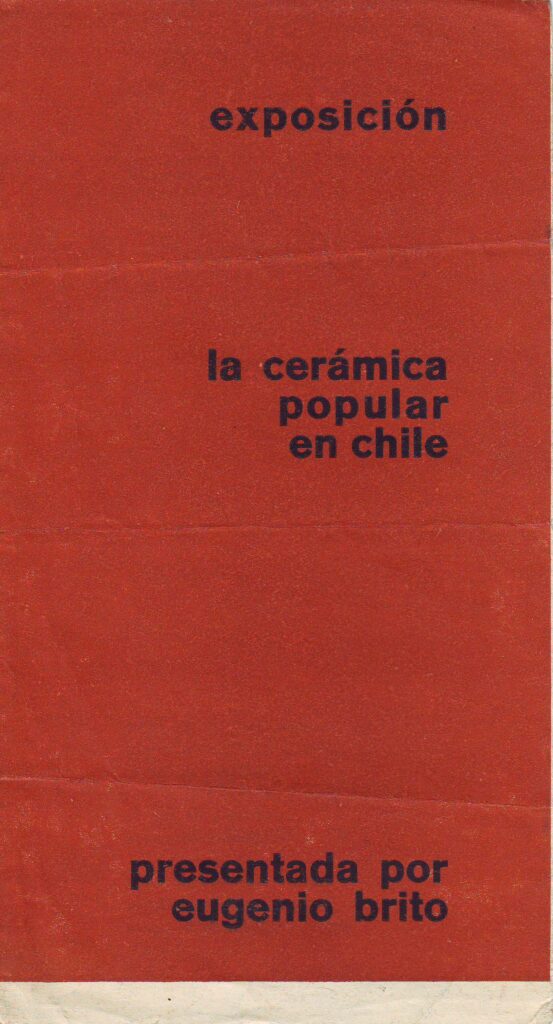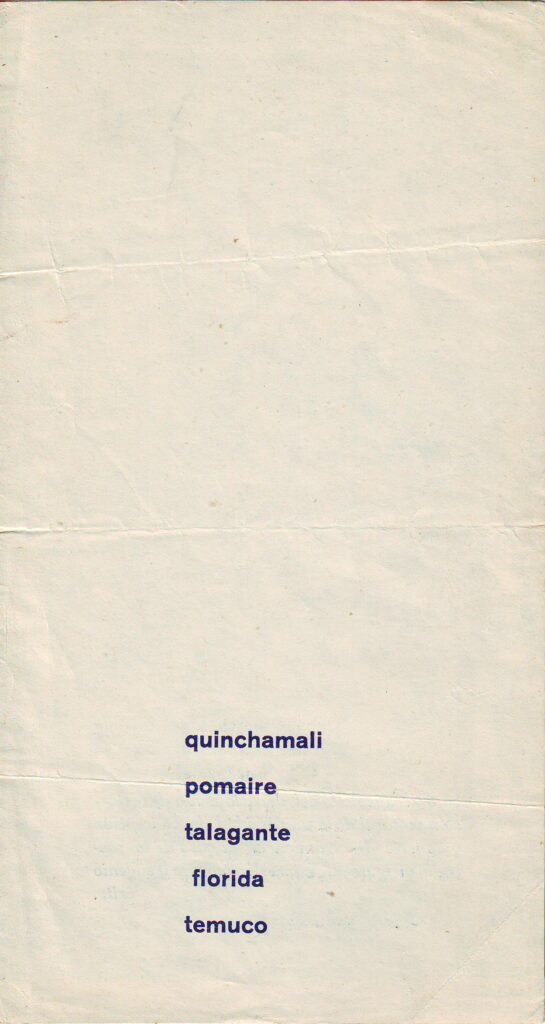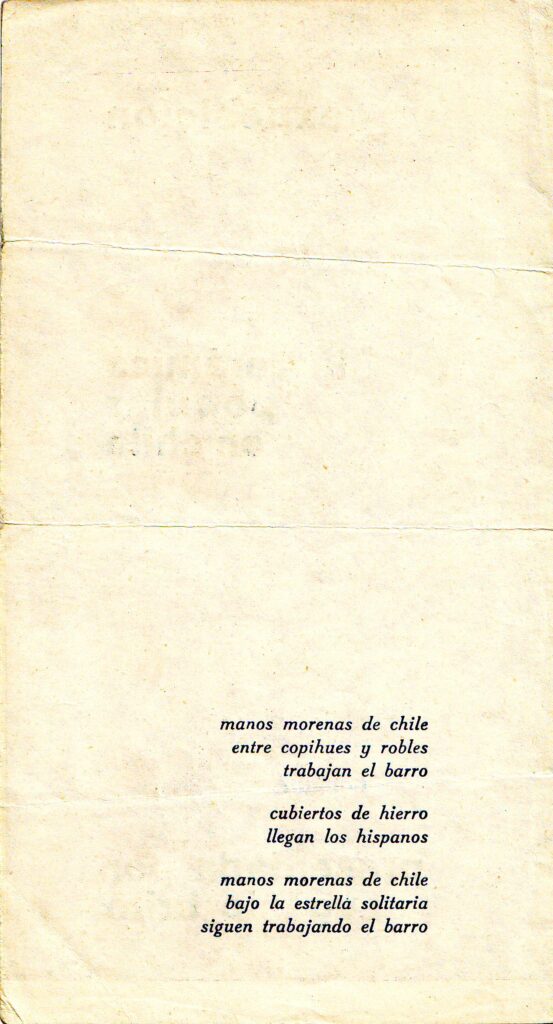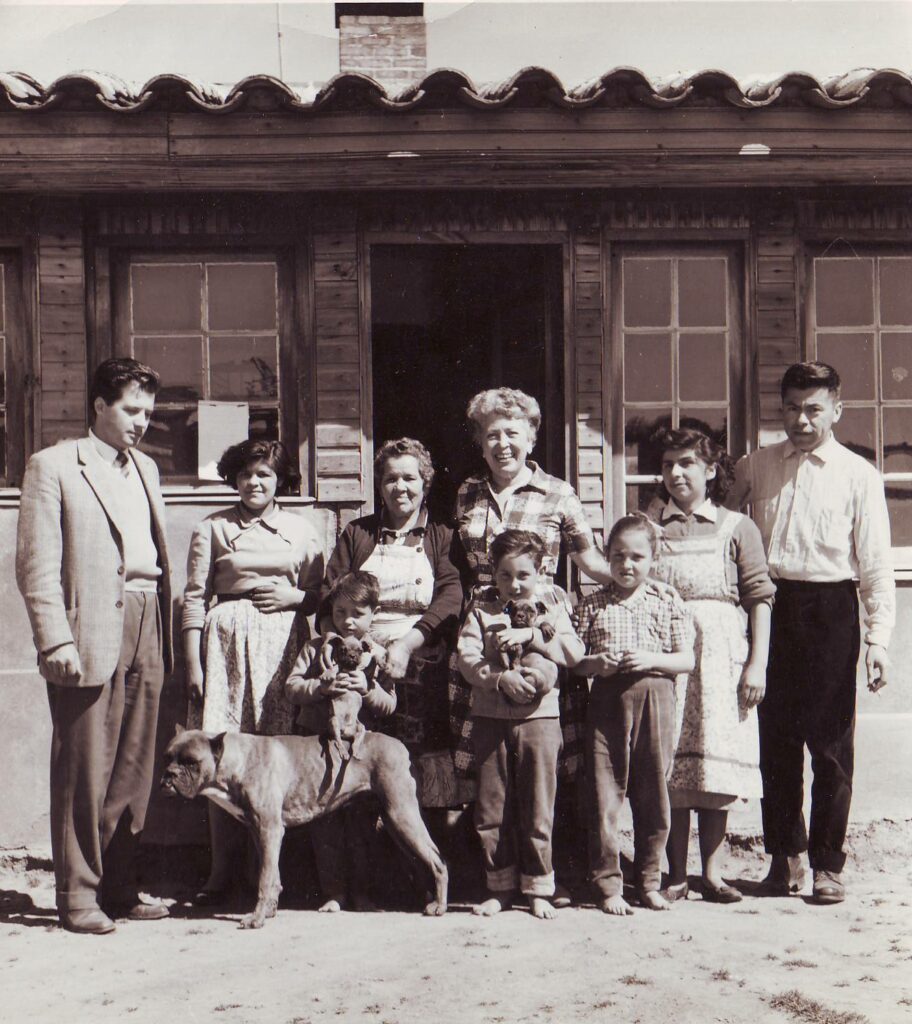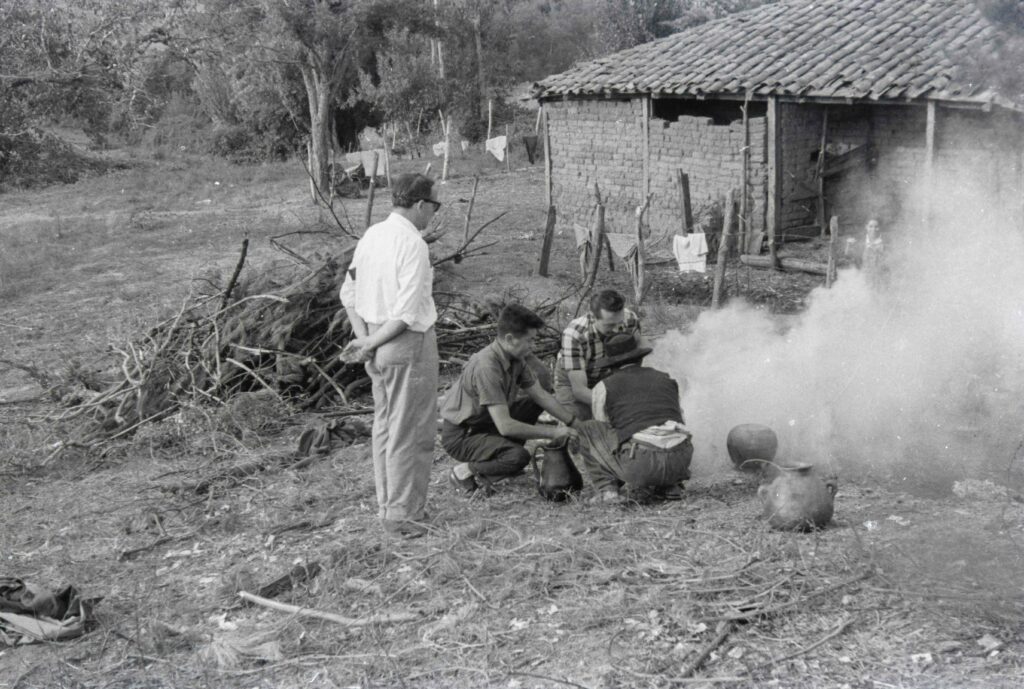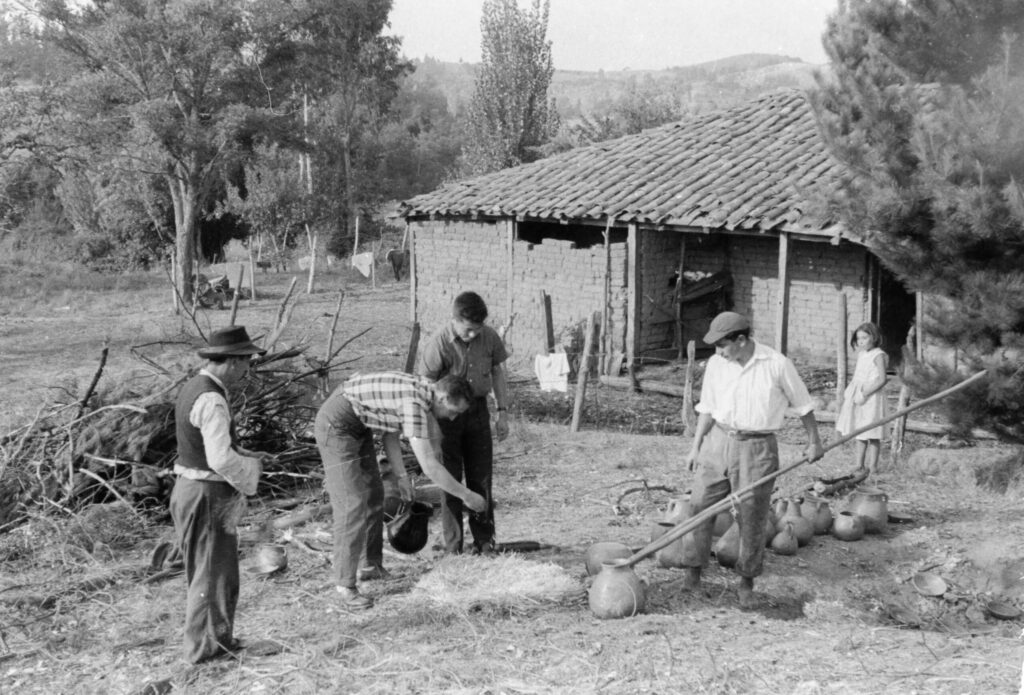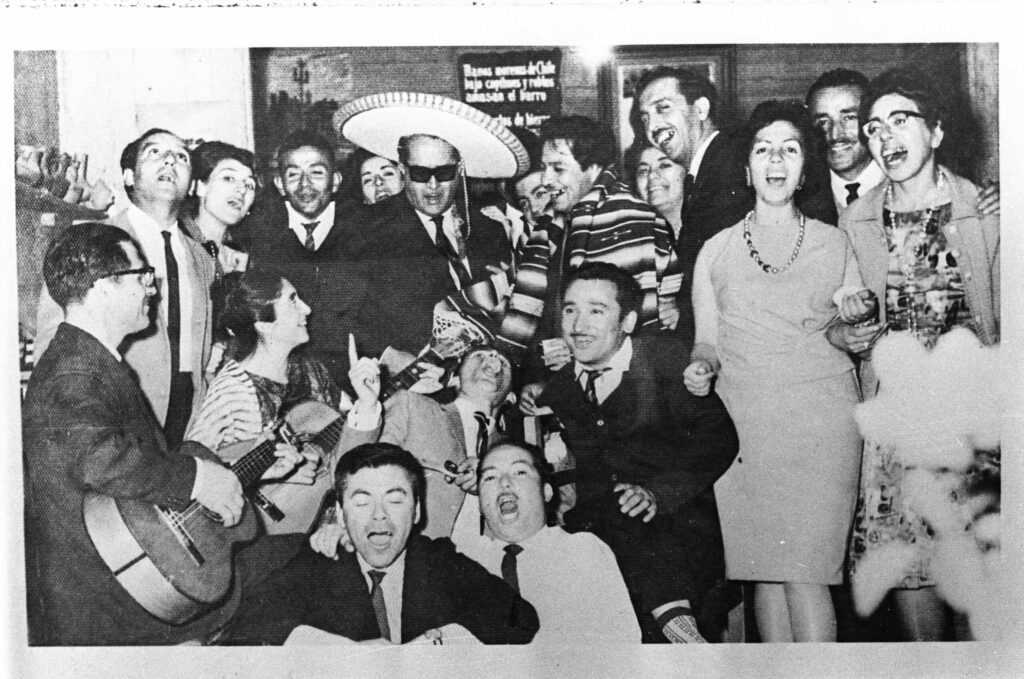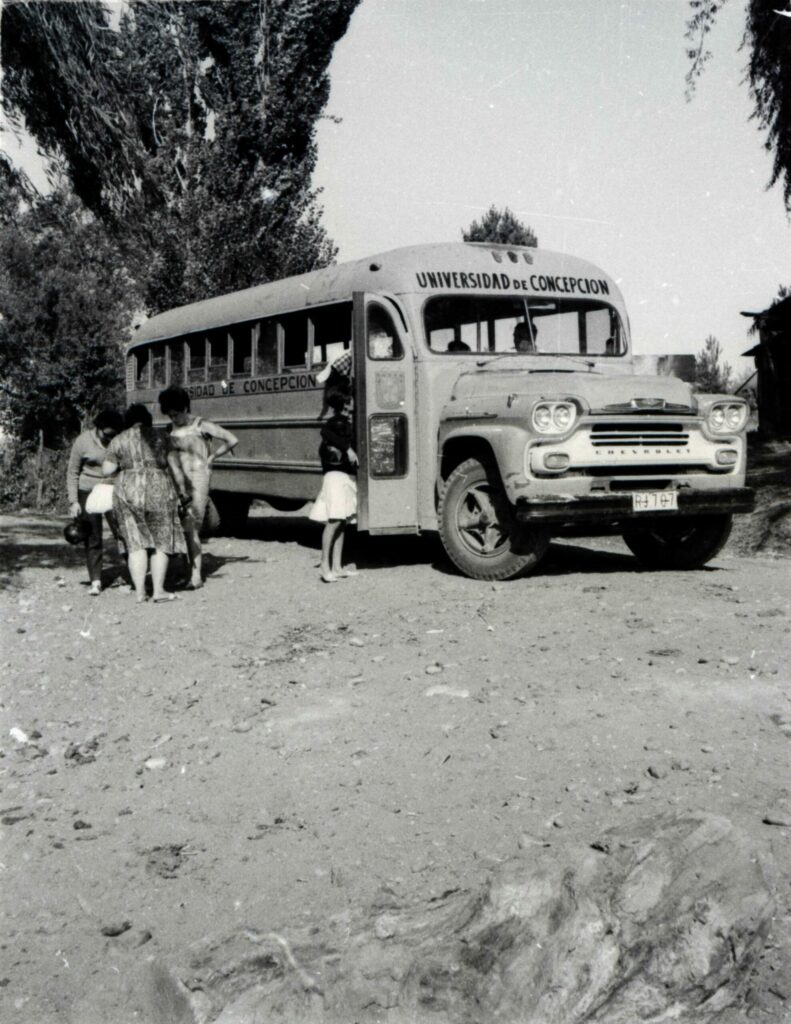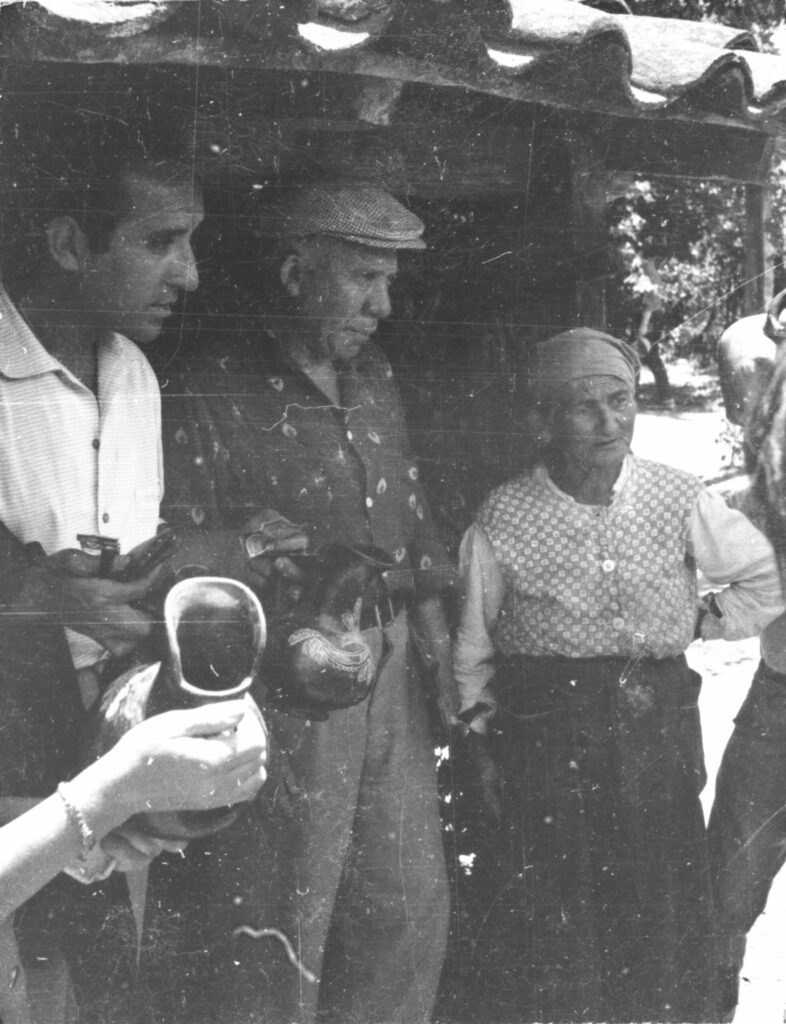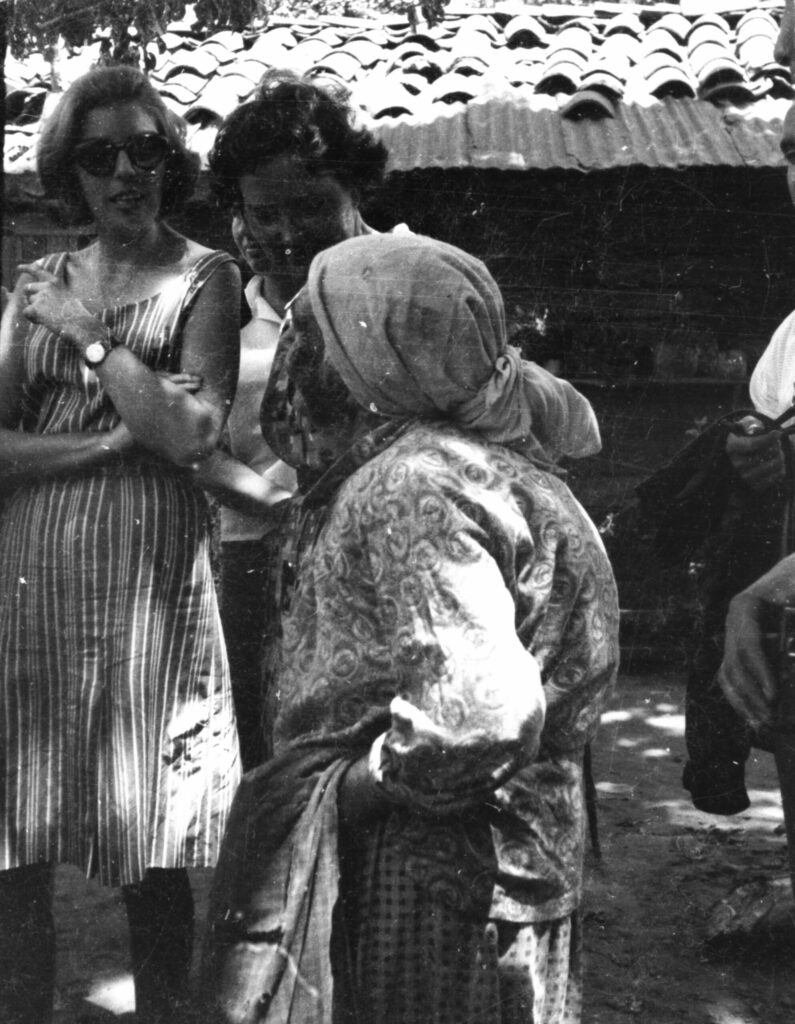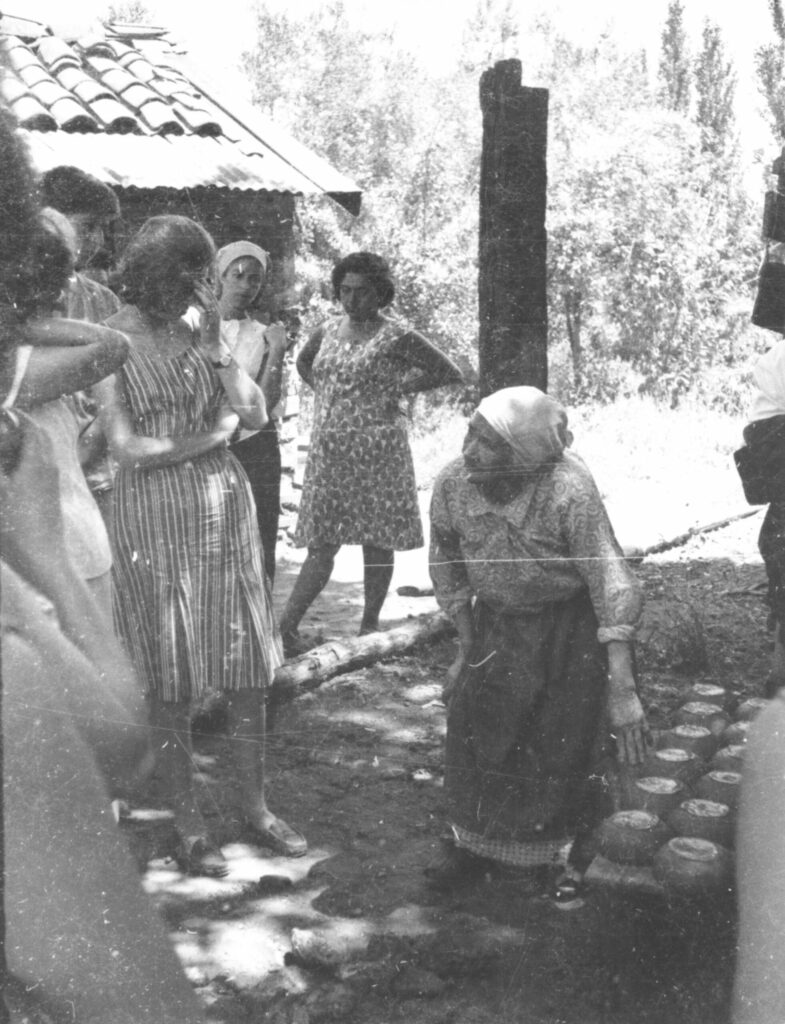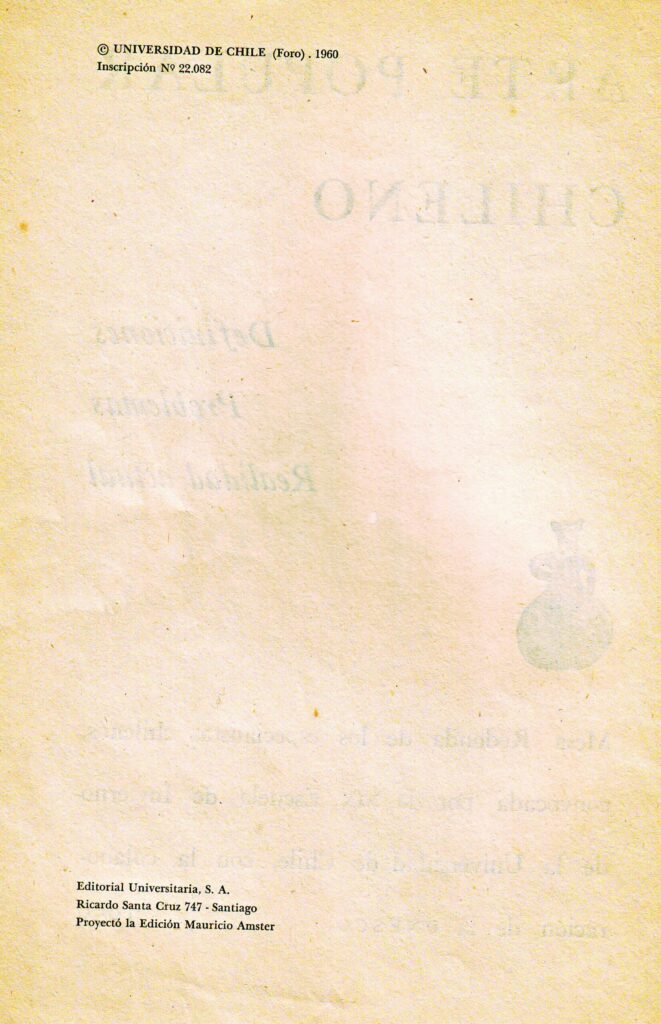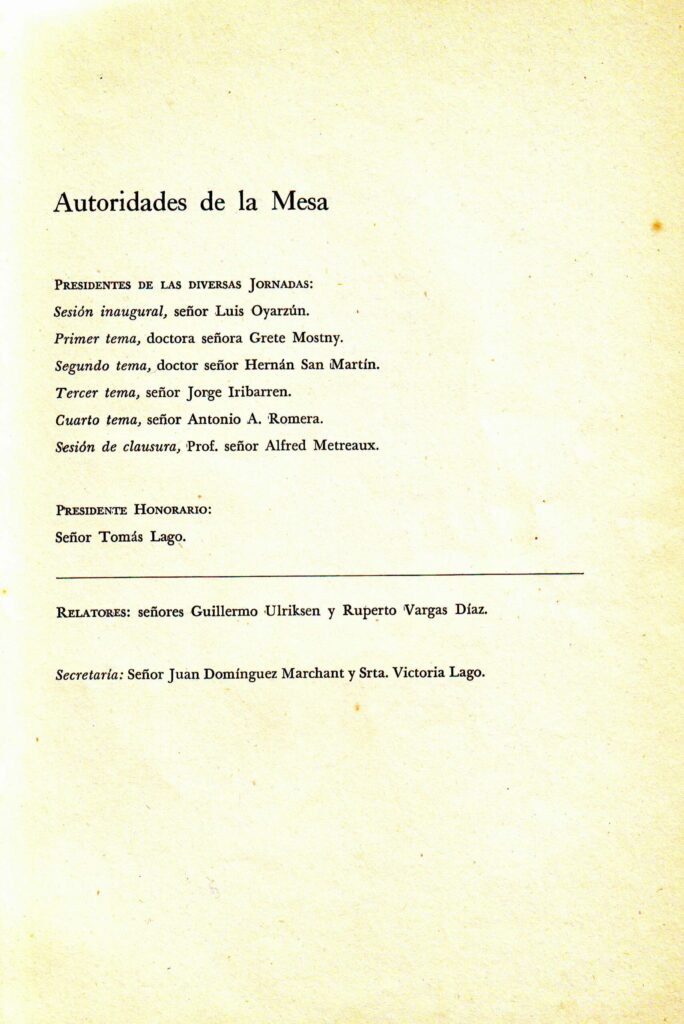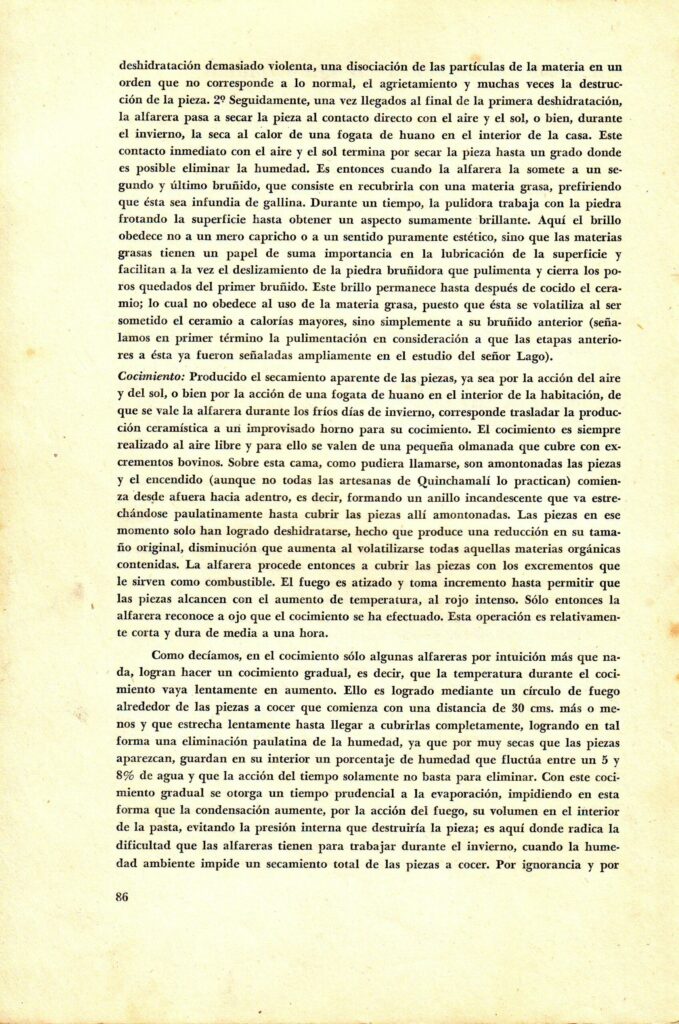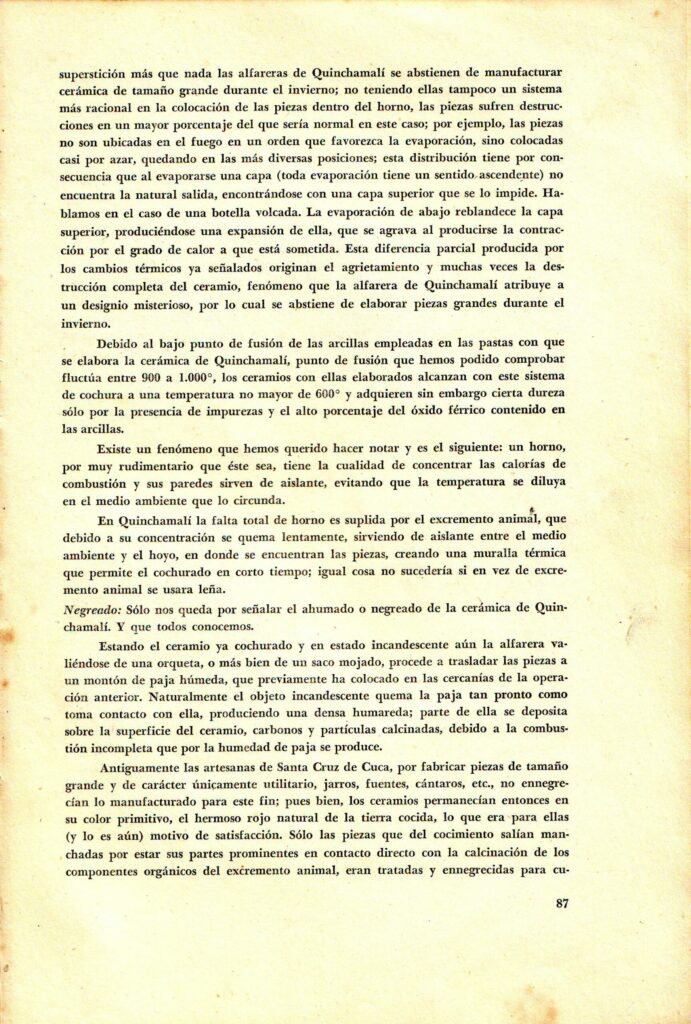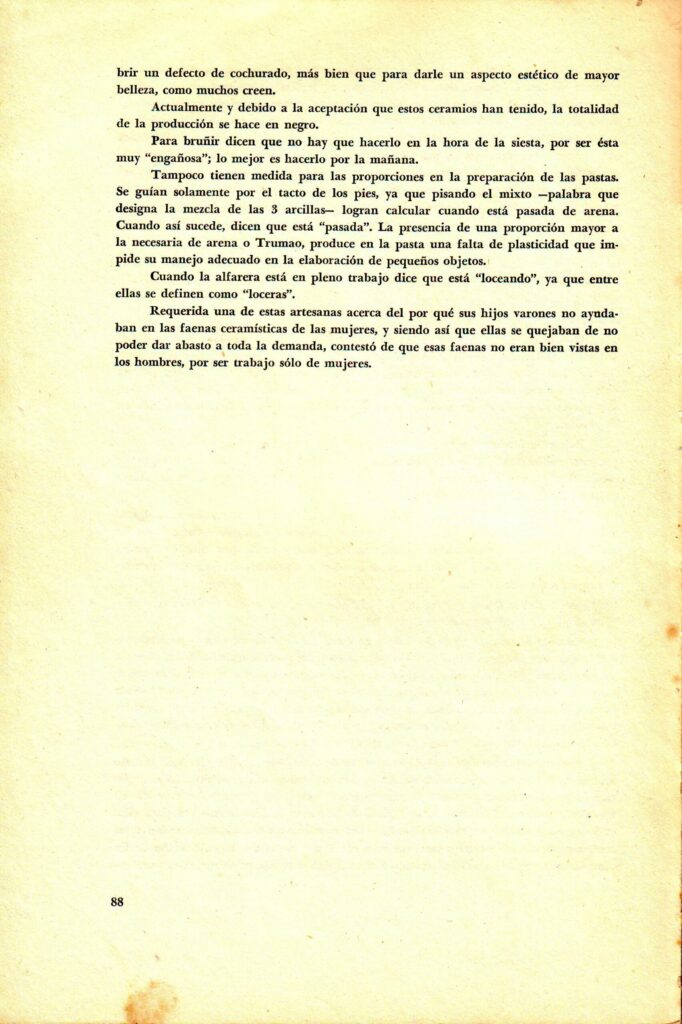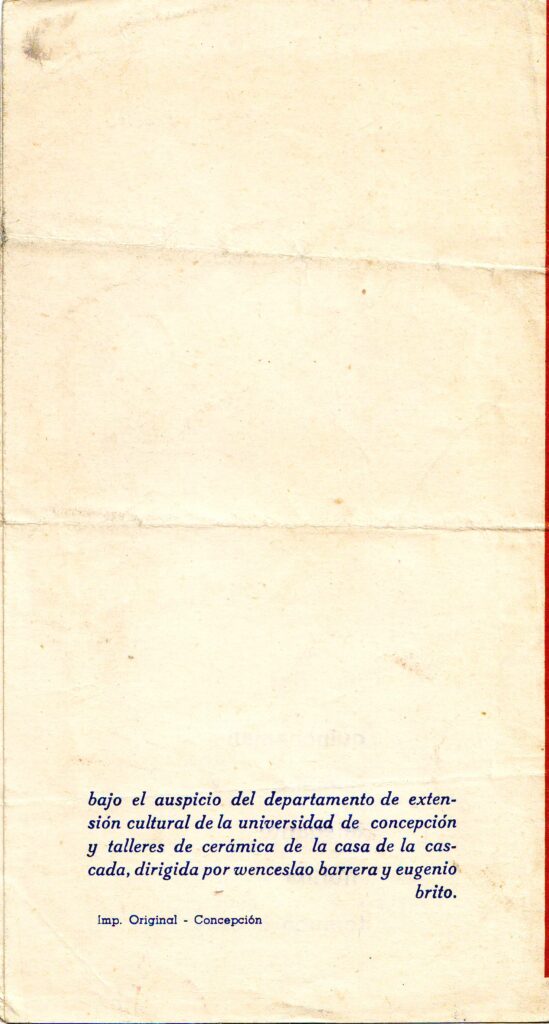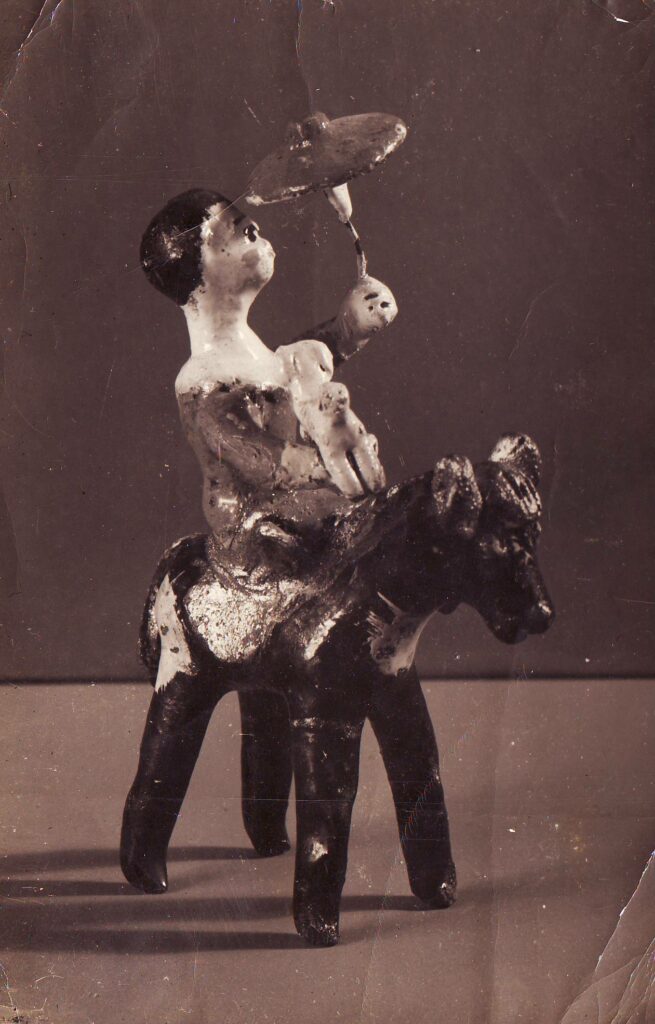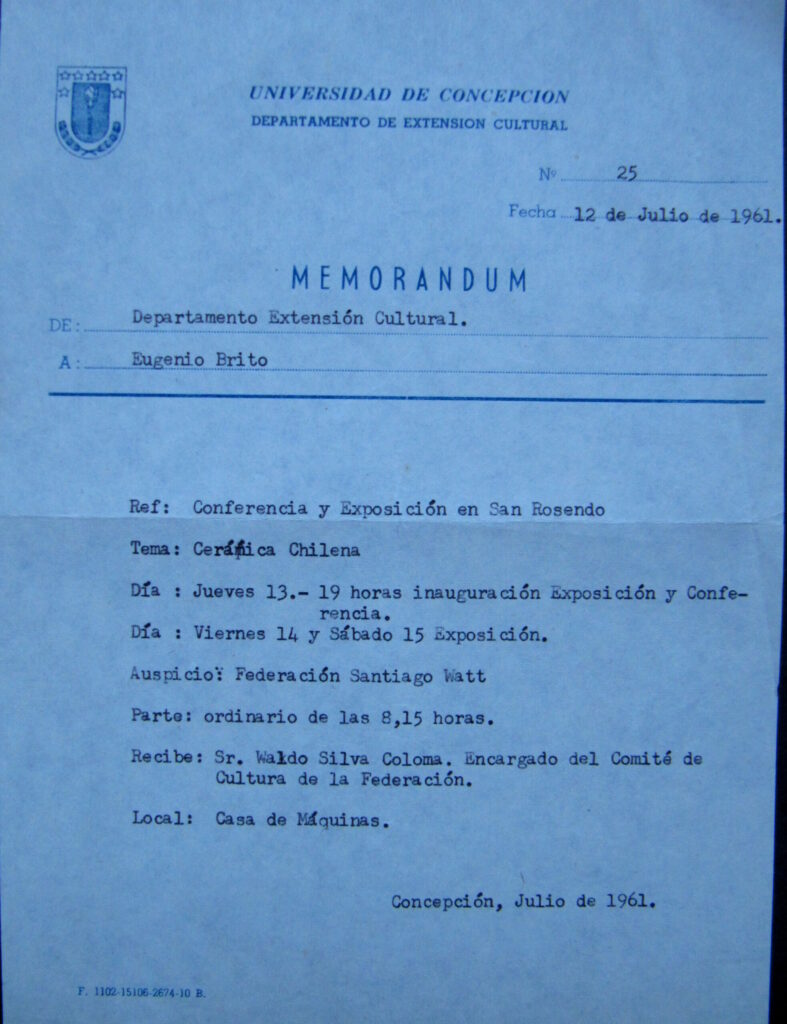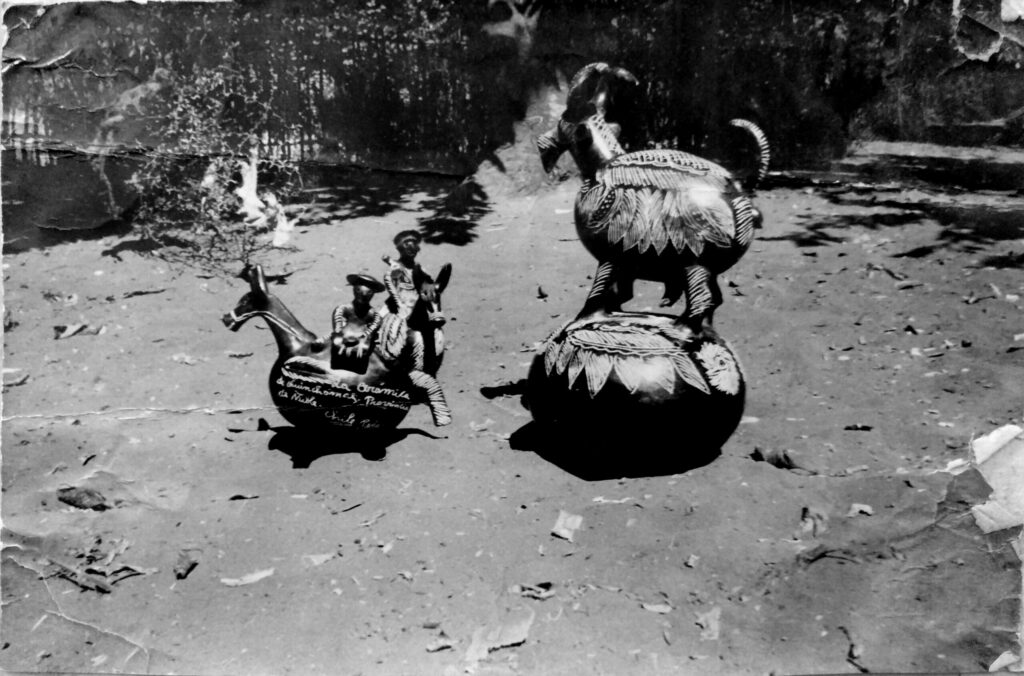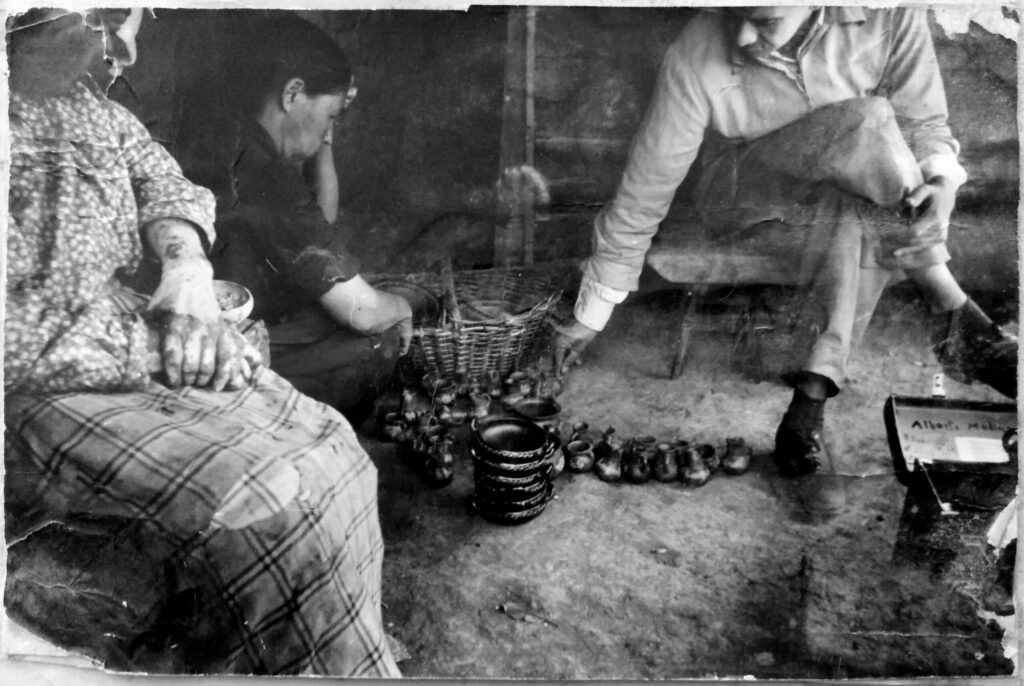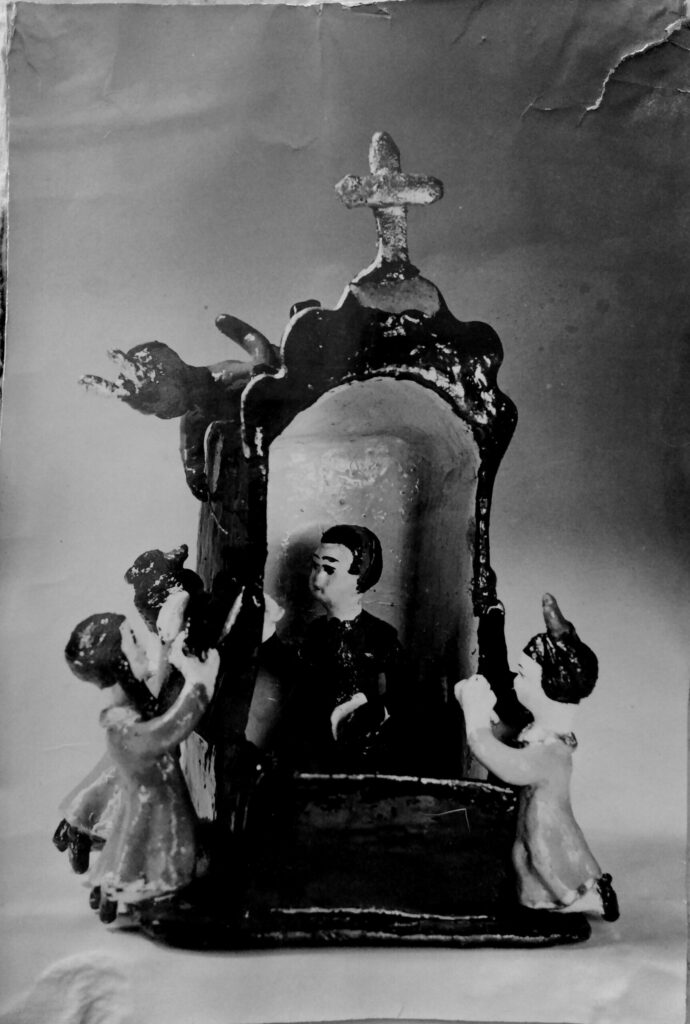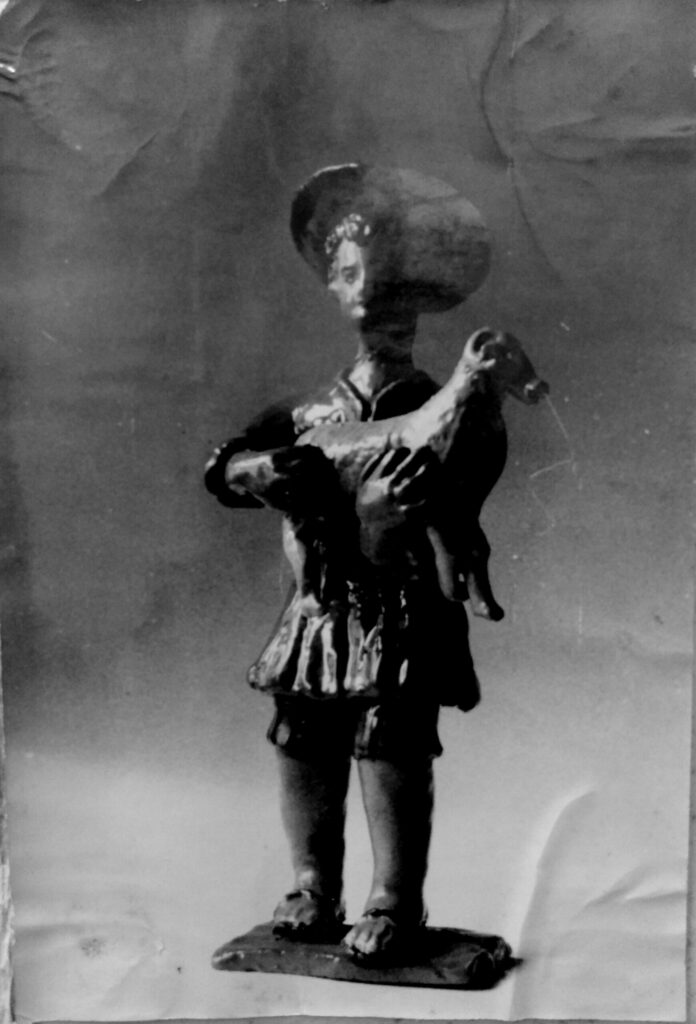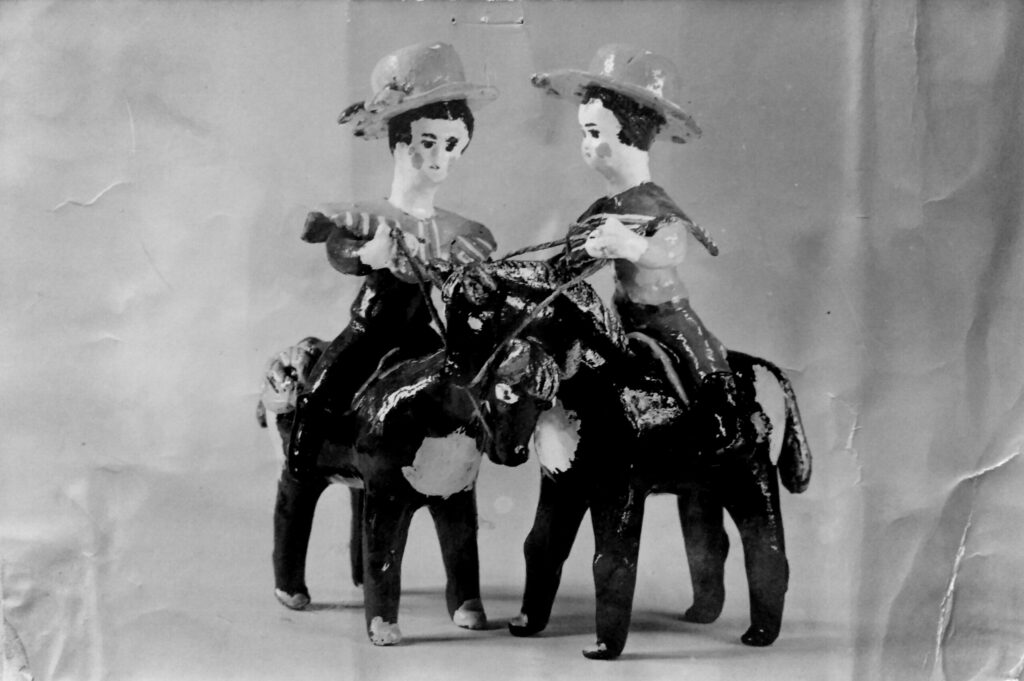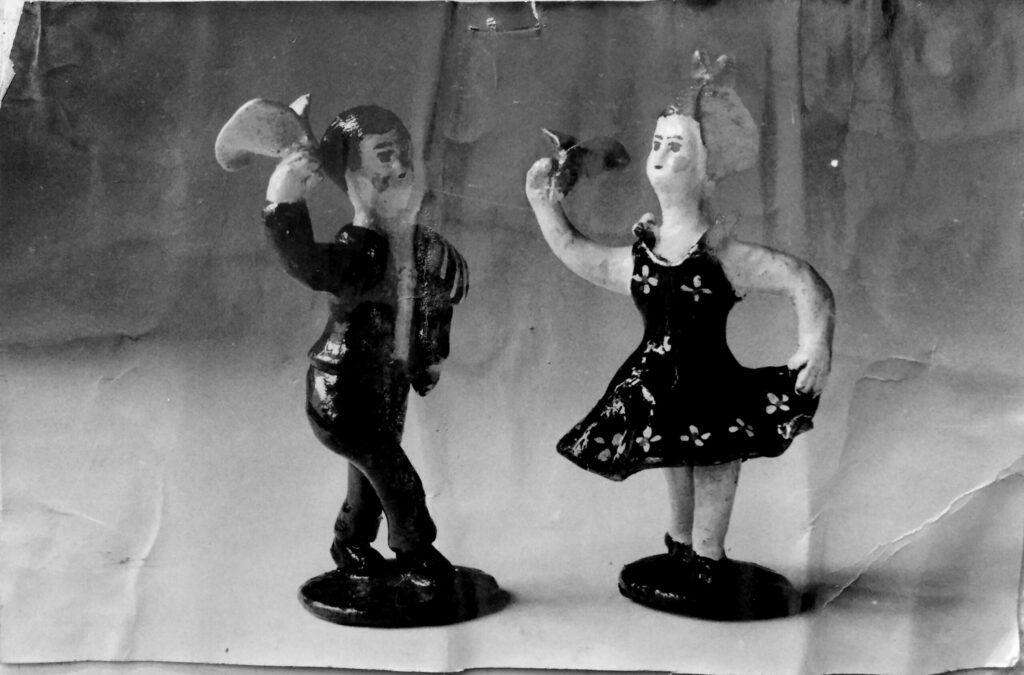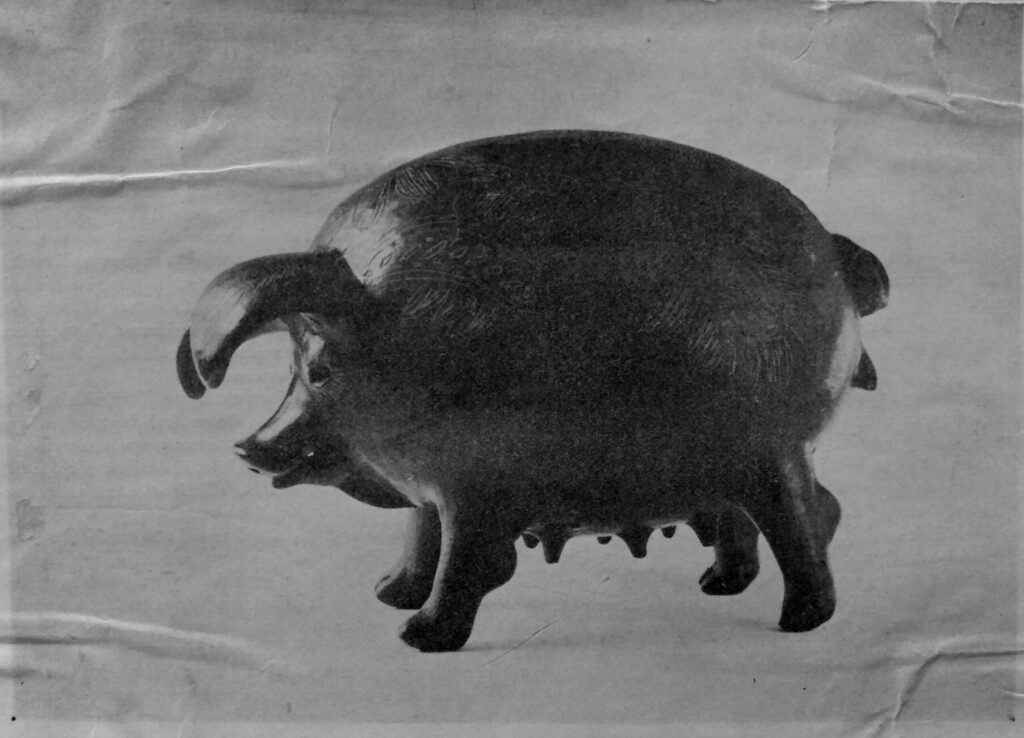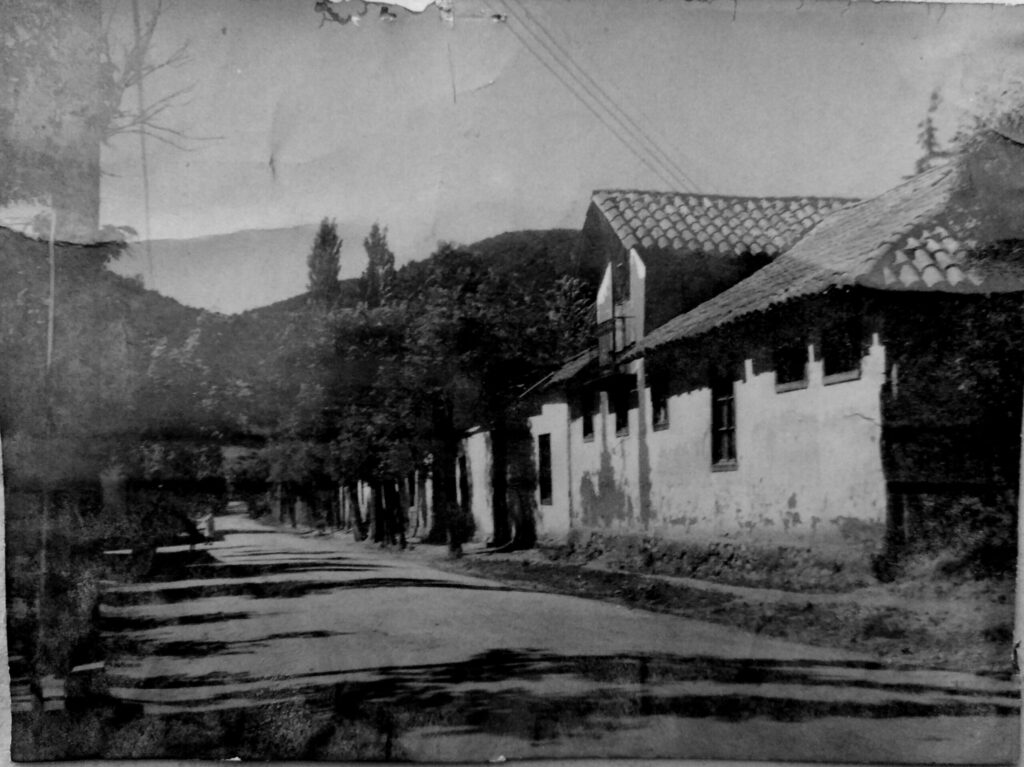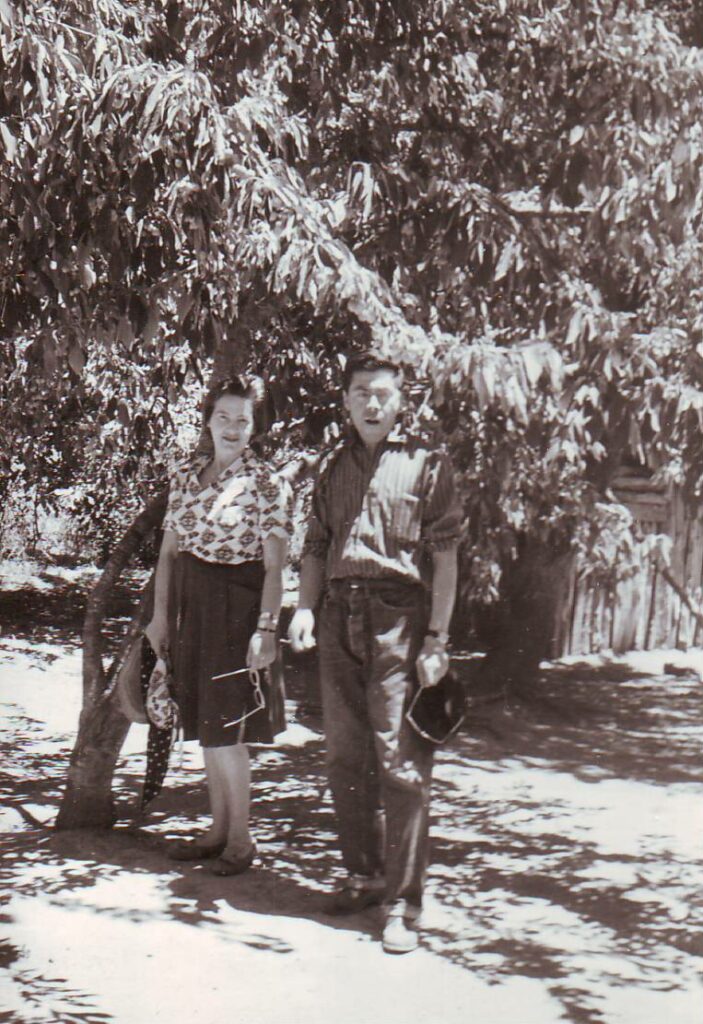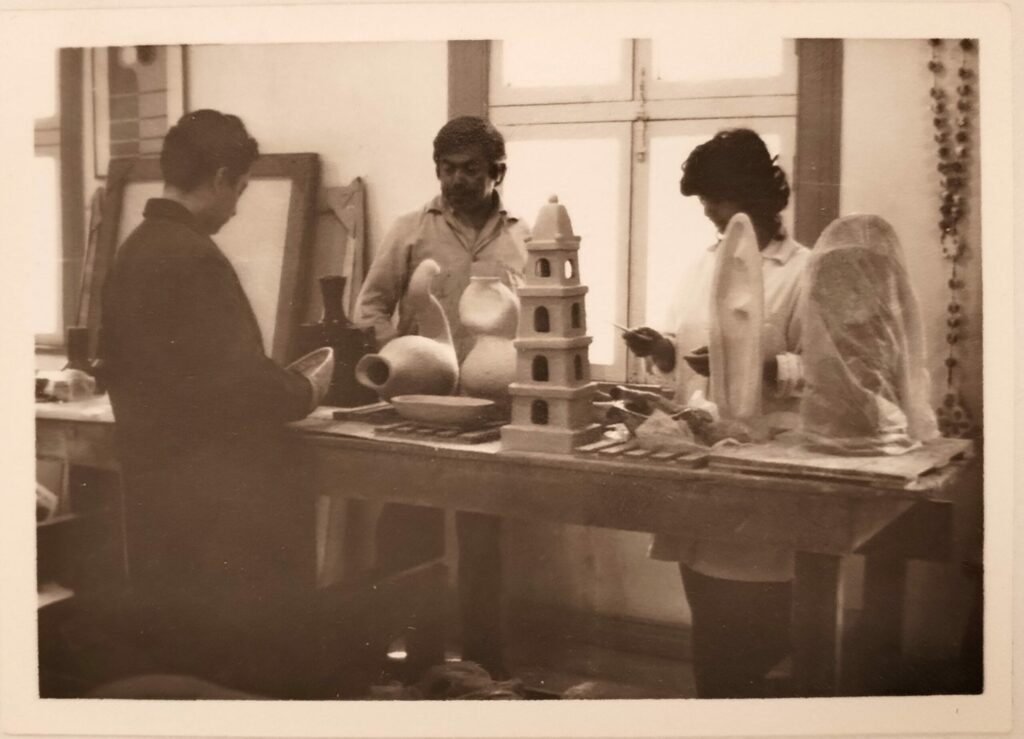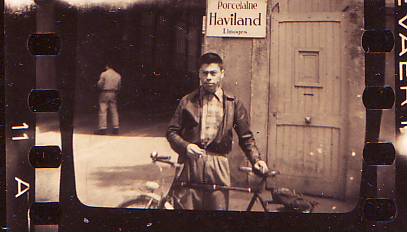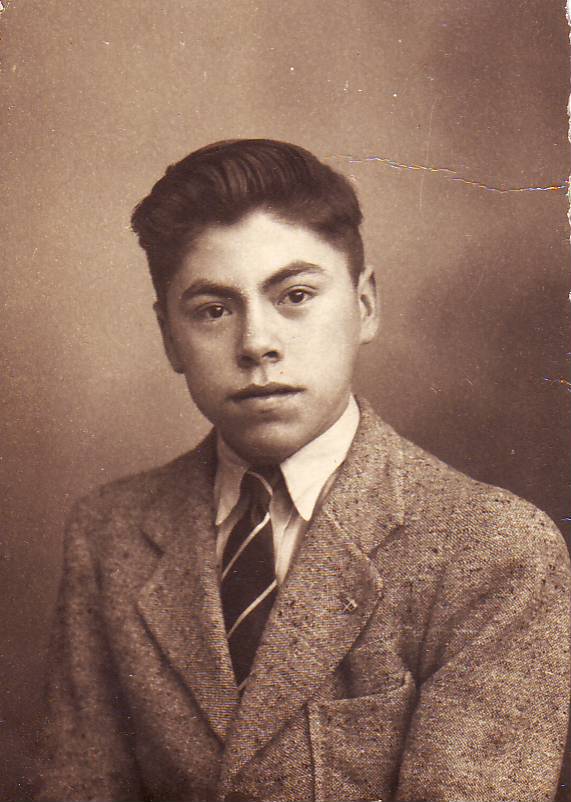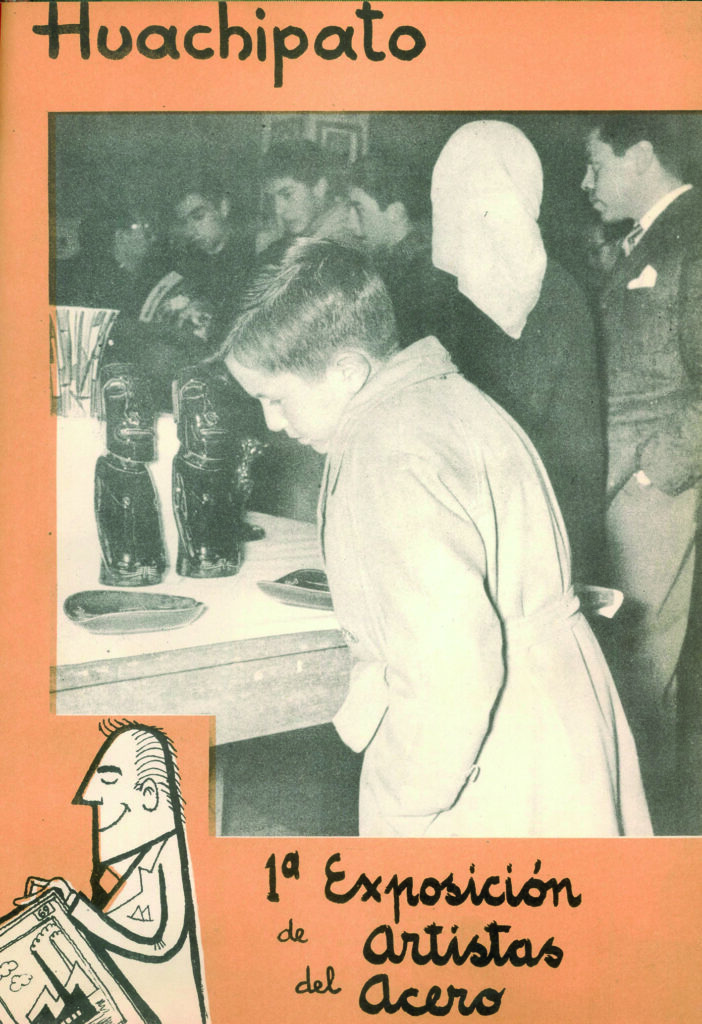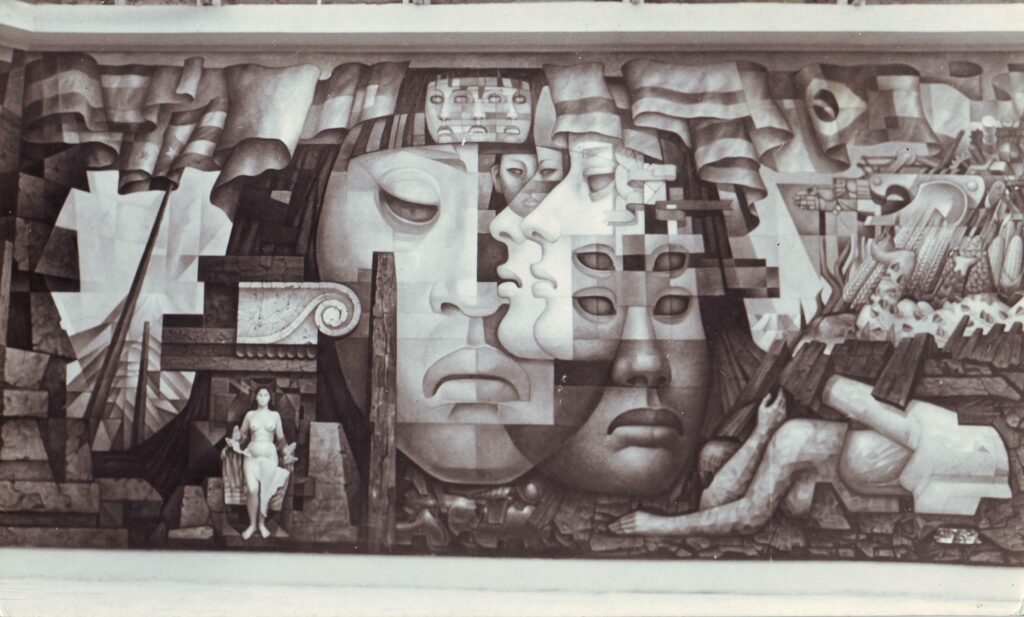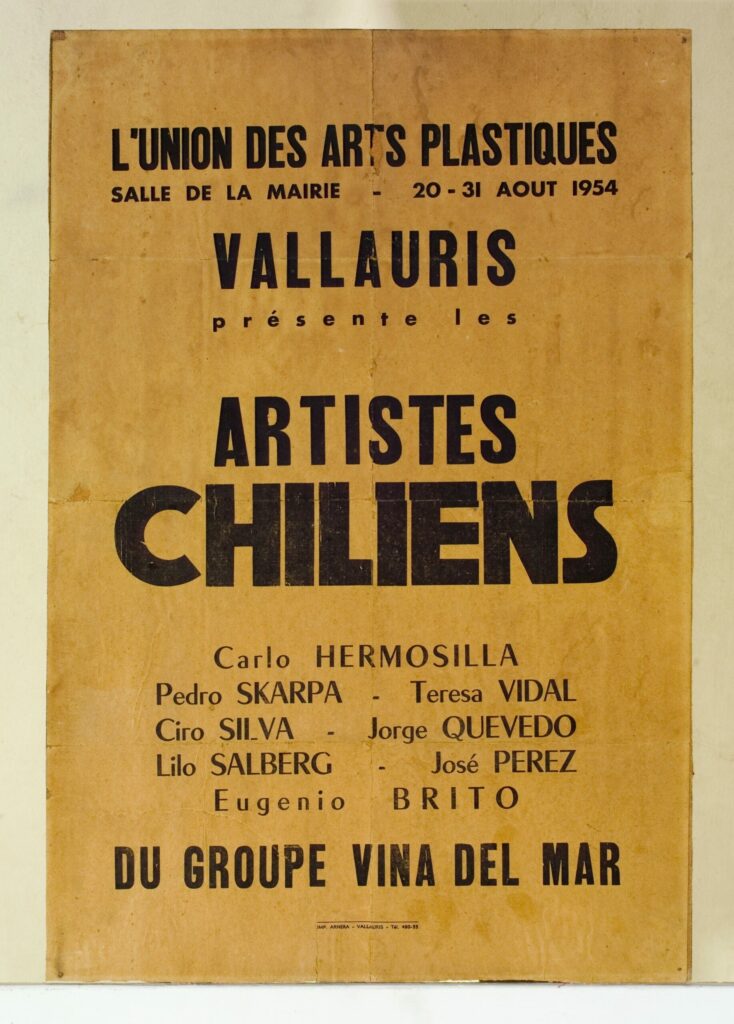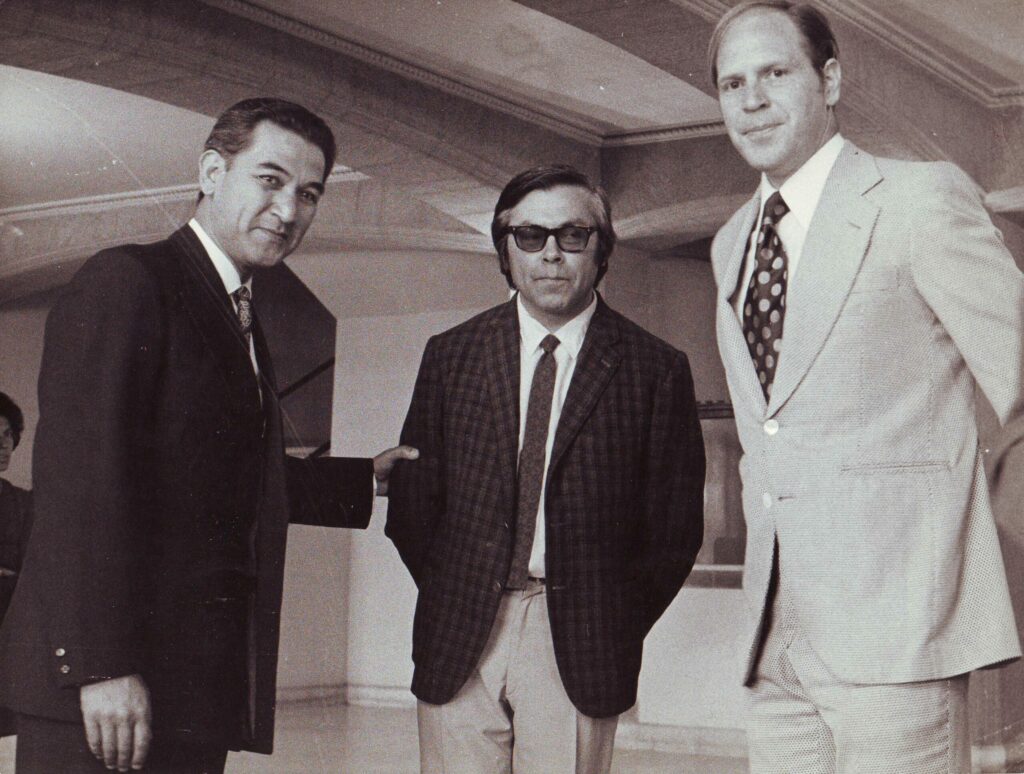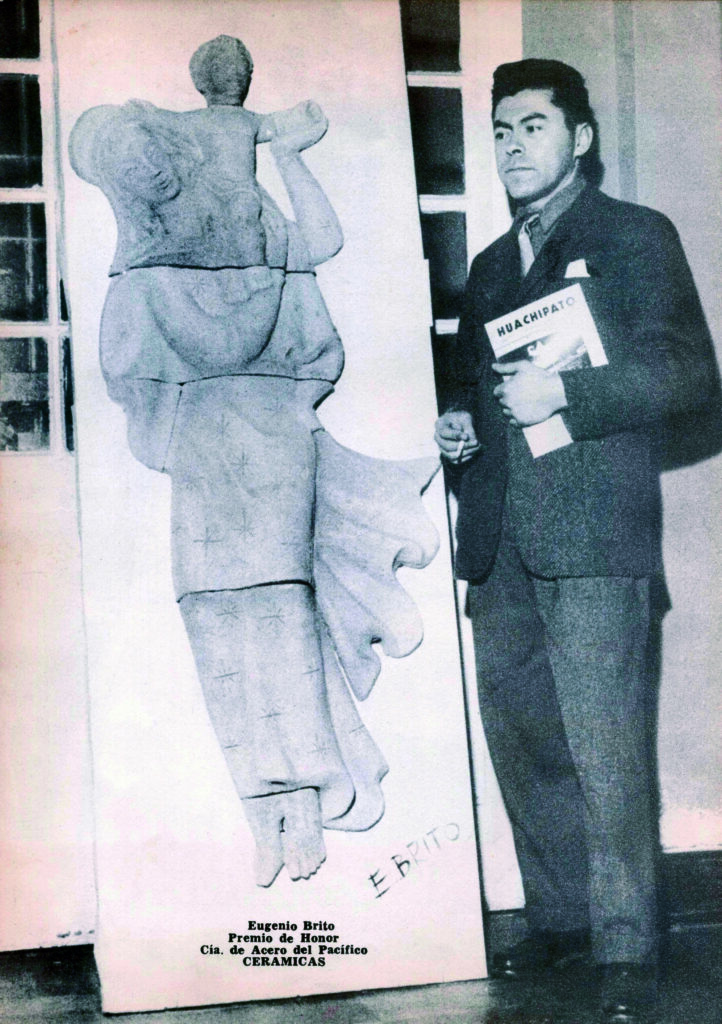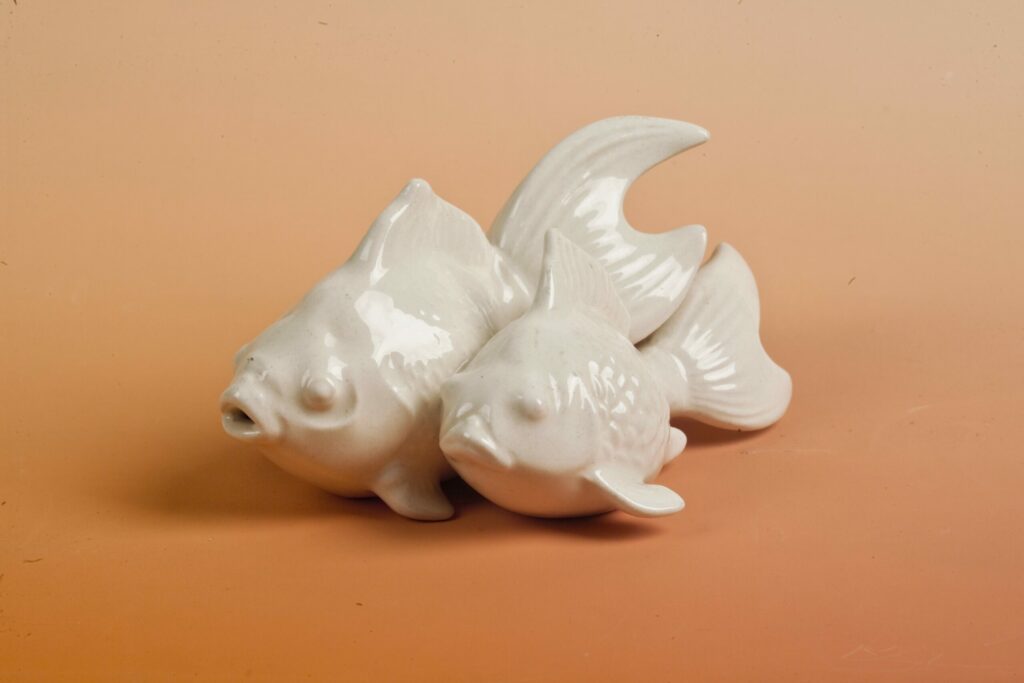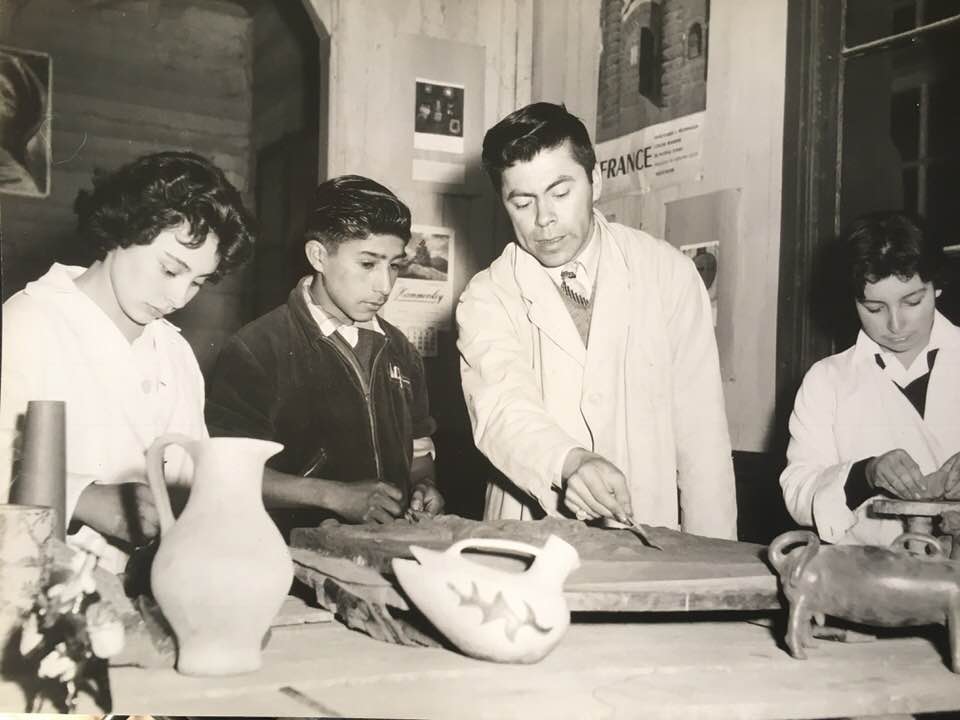Research on popular pottery:
Talagante, Pomaire, Quinchamalí, Florida, Temuco.
Eugenio Brito Honorato underwent a significant transformation after seeing an exhibition of American art at the Museum of Man in Paris and returning to Chile in 1955. At that point, he recognized the magnitude of the continent’s projection and the sophistication of the American continent’s civilization.
In Chile, he collaborated with other national artists who, like himself, looked to immerse themselves in vernacular art by connecting with the customs and researching the history of those who, in various regions of the country, preserved manifestations of their cultural heritage.
Field trips and consultations with ‘loceras’ (porcelain-working artisans) from Quinchamali, Florida, Temuco, Talagante, and Pomaire were arranged. By observing and learning how they worked with clay, they hoped to disseminate their techniques. His objective was to incorporate that tradition into his own aesthetic inquiry and discovered responses to his concerns in it.
The University of Chile has published articles in magazines on the regional pottery he studied in situ as well as the various pigments used in the fields. Furthermore, the clay-firing procedures are detailed in these writings, which were not conducted in conventional ovens but rather in holes dug into the ground. There, the parts were placed and covered with leaves. The primary purpose of these investigations in the field and with the artisans was to safeguard and preserve this ancestral knowledge so that it could continue to be transmitted on a human level and prevent its obsolescence due to industrialization.
